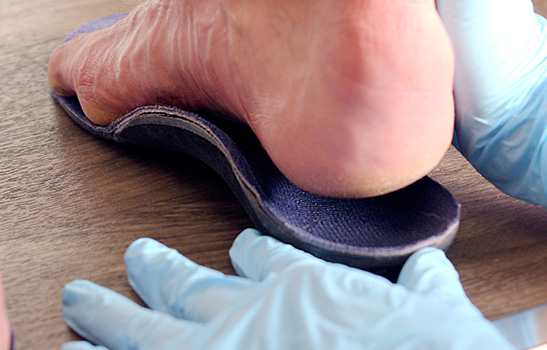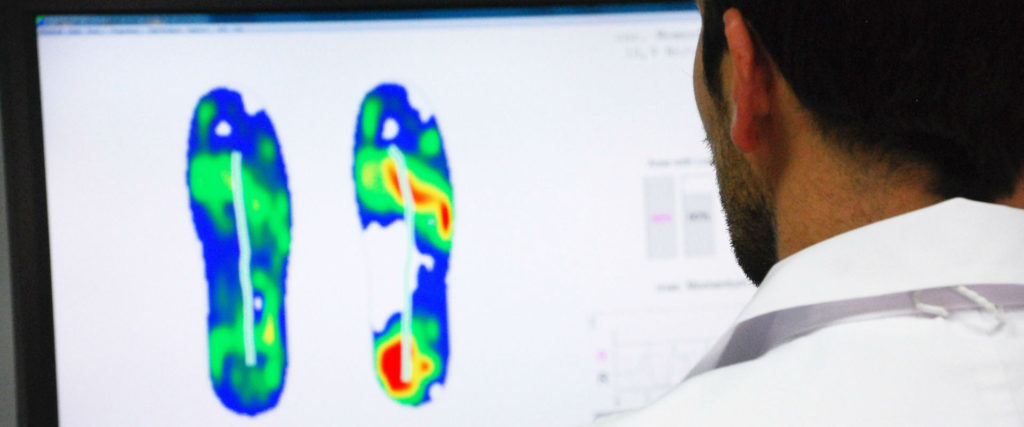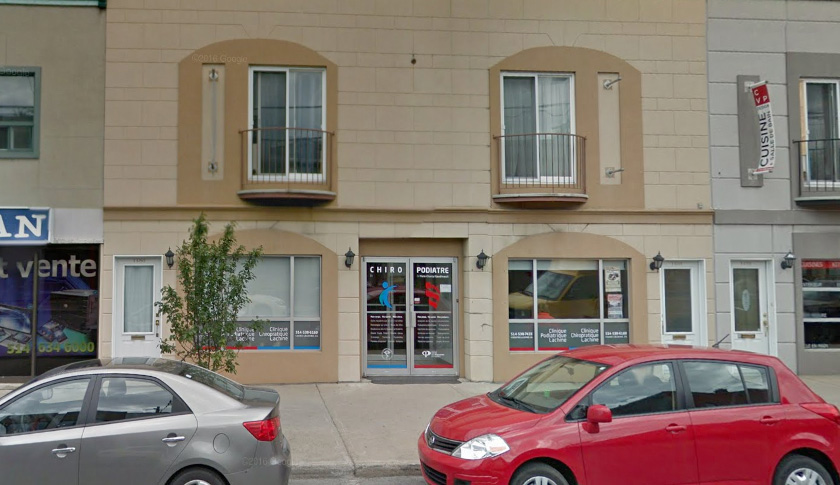Analysis of plantar pressures
This is a detailed analysis of the gait and posture.
Analysis of plantar pressures, what is it?
This is a detailed analysis of the patient’s gait and posture. The patient walks barefoot on a plantar pressure platform (or pressure plate) that is integrated in the floor. This platform is equipped with 1,920 pressure sensors and is connected to a camera, allowing for a highly accurate reading. Once the data is collected, the podiatrist can interpret the results and make the association with the rest of the biomechanical exam findings.
Computerized analysis of plantar pressures, who is it for?
- Patients requiring a comprehensive biomechanical exam of their gait and posture
- Patients suffering from foot pain
- Patients needing an evaluation of the mechanical function of their feet
- To evaluate children’s biomechanical development based on their age, allowing for early treatment, if required
- In athletes, to identify biomechanical strengths and weaknesses
- In diabetics to help assess the risk of pressure ulcers
What are the earnings of a computerized analysis of plantar pressures?
A plantar pressure analysis is an important part of a comprehensive biomechanical exam which allows the podiatrist to perform a visual and quantitative assessment of the following:
- Pressure distribution under support areas
- Movements of the foot during the various phases of the gait cycle
- Functional compensation mechanisms
- Overloaded areas
- Feet asymmetry
- Comparison between the dynamic and static analyses (walking vs standing)
- Momentary pressure points (during a specific phase of the gait cycle)
- Maximum pressure points (throughout the entire gait cycle)
- Weight distribution on each leg (lower limb)
- Areas at risk of injury or ulceration in diabetics
- Trajectory of the centre of mass
- Angle measurements between different segments of the lower limb
Finally, since the images from the camera are saved along with the analysis, the evaluation allows the podiatrist to see how a person’s gait and posture evolve over time.
-
Data is recorded during the gait cycle
The patient is asked to walk on a force plate integrated into the floor of a passageway, which allows for a natural gait. To analyze the gait, a series of strides are captured on camera, from the front and from the back.
-
Data is recorded while the patient is in standing position
For the posture analysis, the patient must maintain a natural standing posture for 10 seconds. This allows the software to calculate a data average without being influenced by the natural swaying of the body.
-
The results are interpreted and explained
Using a screen located in the treatment room, the podiatrist explains and reviews the key points of the gait and posture analysis with the patient. This allows both the podiatrist and the patient to better understand the patient’s overall biomechanics.
-
The results are linked to the other exam data and a treatment plan is developed
The podiatrist links the results with those of the other physical and radiological exams in order to develop a treatment plan tailored to the specific needs of the patient.
I don’t need to see a podiatrist since I can get the same tests done at Costco.

The machines used to measure plantar pressures are of varying quality. Most of the time, these machines are only used in static mode (standing) and without the presence of a qualified professional who can interpret the data while taking into account the patient’s overall condition.


